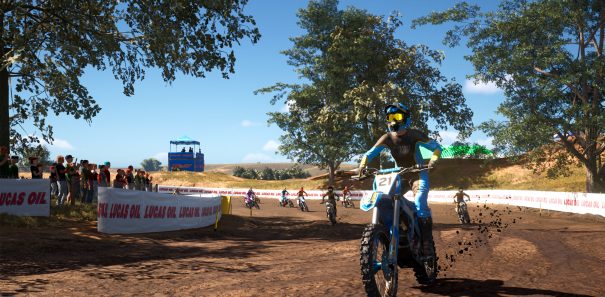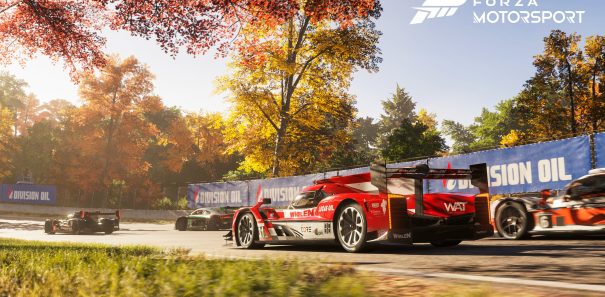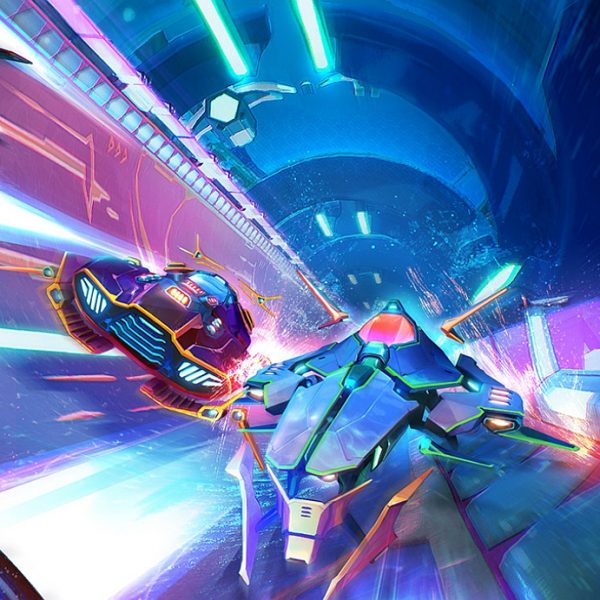The series may have been clearly inspired by Gran Turismo, but it’s still quite eerie that the core entries in the Forza Motorsport franchise have trod down a similar path to that of their PlayStation equivalents.
For instance, the inaugural GT and Forza games were hugely pivotal in cementing the successes of their respective consoles, with the iterations on the PlayStation 2 and Xbox 360 each becoming the more critically-acclaimed entries in their corresponding franchises. And then things fell apart with that problematic fifth attempt, leaving the next release to restore fan trust whilst also improving the series in meaningful ways.
As a result, it’s very easy to compare Forza Motorsport 6 to Gran Turismo 6 – and, in many ways, it’s quite valid to make that cross-examination. Mainly because both games simultaneously right many of the wrongs of their predecessors, yet in equal measure retain frustrating legacy features and pinpoint bizarre directions for their franchises to pursue.
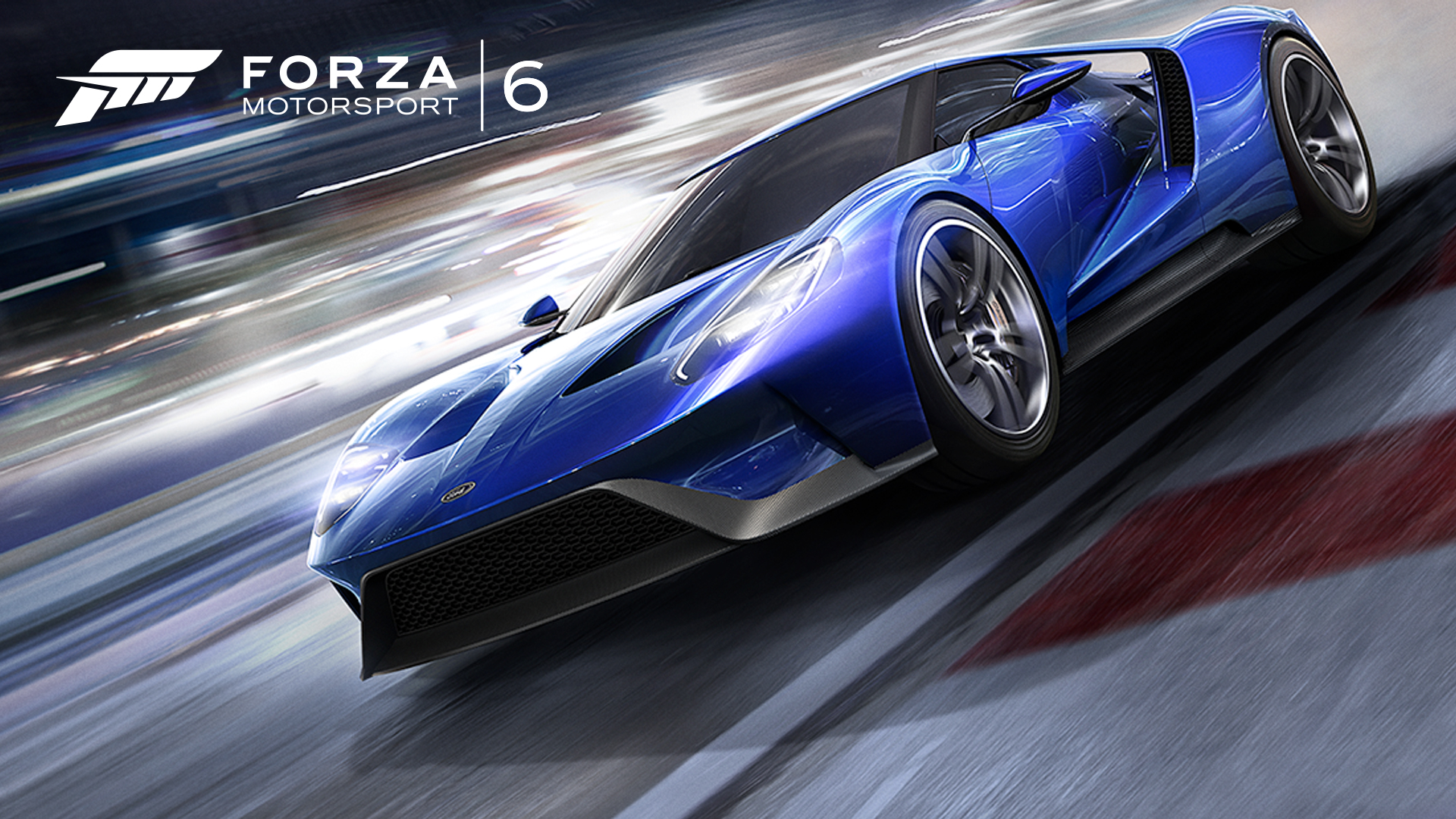
Formula Won
Initial impressions of Forza Motorsport 6, though, don’t immediately foreshadow that inconsistent nature. Rather, the initial few hours suggest that Forza Motorsport 6 isn’t just a noticeable improvement on its Xbox One launch title predecessor, but that it could also be the game that brings the Forza Motorsport series back to its seventh-gen glory days.
For instance, the qualms over content that dominated the debate over the previous game are now thankfully eradicated in Forza Motorsport 6. The 461-strong car roster is broad not only in its sheer size (Forza Motorsport 6 has the largest licensed vehicle roster of any standard Forza game, no less), but also in its extensiveness. Everything from dinky hatchbacks and vintage classics to track day toys and many of the latest performance cars are all present here, ensuring players who call themselves car enthusiasts will have plenty of vehicles to suit their tastes and preferences.
What perhaps makes Forza Motorsport 6’s car list particularly special, though, is that there’s a much greater emphasis on racing cars this time around in comparison with previous Forza entries. Though the duplicates do eat into the game’s actual car count (whilst roughly one-in-four cars in Forza Motorsport 6 is a homologated racer, the number of unique models only racks in at 75), the variety of disciplines being represented here is incredibly diverse: the glory years of Can-Am, Group 5 touring cars, three eras of Formula One, endurance sports car prototypes from across the ages, pre-war grand prix racers and a majority of the teams from this year’s IndyCar, Formula E and V8 Supercars championships.
Developer Turn 10 Studios has championed for years that the Forza franchise celebrates cars and the culture that surrounds them, but Forza Motorsport 6 is the first entry in the series that actually feels like an interactive love letter to the worlds of motoring and autosport.
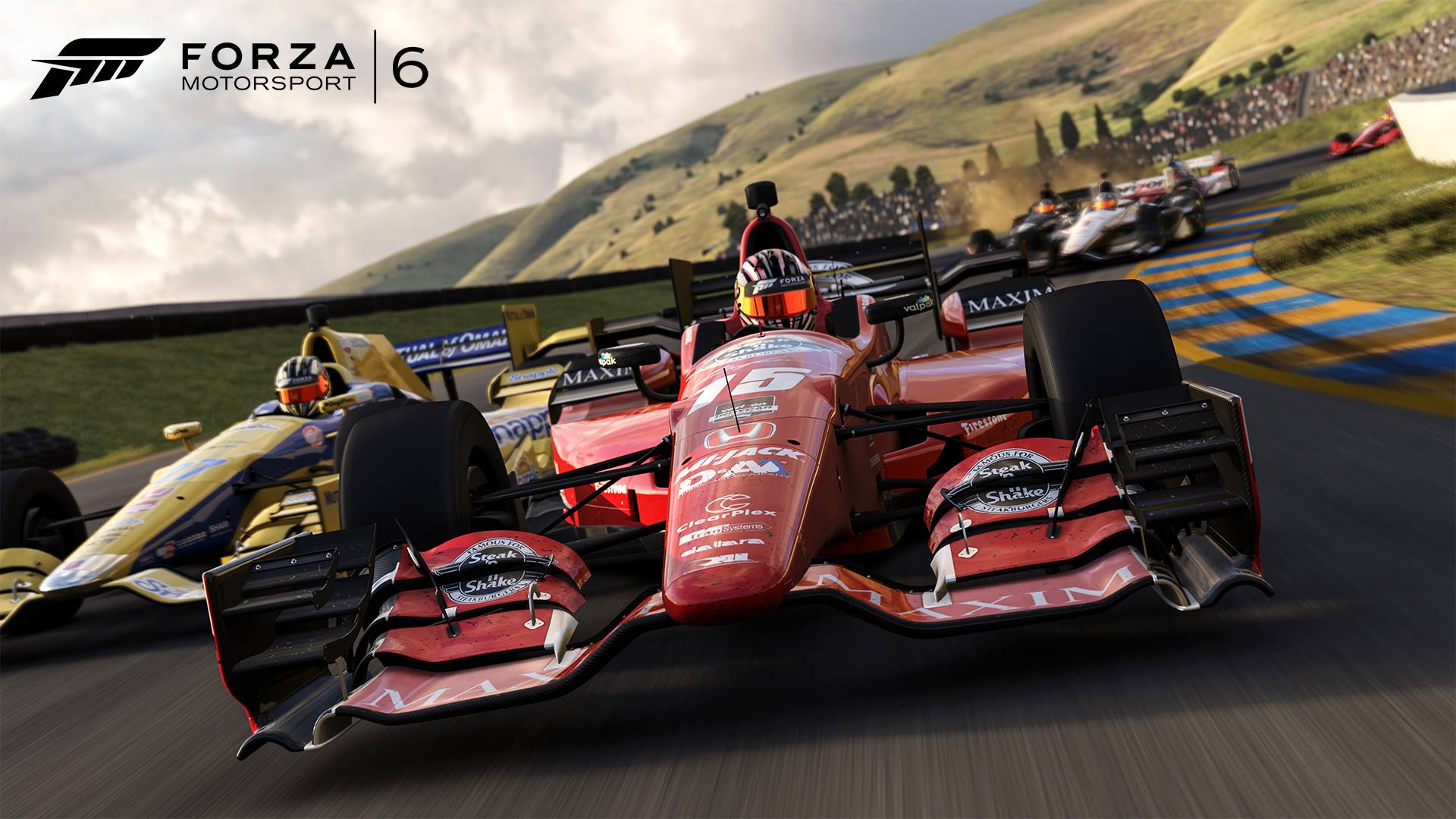
Having such a broad array of cars means little, though, if you don’t have enough circuits to race them all on – even with Road America, Long Beach and the Nurburgring added to the game in free updates, Forza Motorsport 5 proved that a limited number of environments can result in track fatigue setting in quite quickly. Thankfully, Forza Motorsport 6 addresses that issue too, by being packed with 26 unique circuit locations – an increase of 12 over what Forza Motorsport 5 featured on launch, and the second-highest count of any racing game on the Xbox One (Project CARS just about ekes ahead with 30 locations).
As with the car list, Forza Motorsport 6 excels in leaning more to the international racing scene, with some of the greatest circuits in the world being represented in the game. Along with all the venues featured in Forza Motorsport 5, Forza Motorsport 6 also adds the likes of Daytona, Monza, COTA and Brands Hatch (the latter being an addition that pleases us greatly at Team VVV), with returning fan favourites Sonoma and Hockenheim also making their first Forza appearance on the Xbox One.
Perhaps the cherry on the top, though, is the new Rio de Janeiro street circuit. Whilst it isn’t a brand new location (the first Forza Motorsport game also had a fictional route in the centre of the Brazilian city), it is a far more vibrantly coloured and technically complex venue, full of splendid scenery, steep elevation changes and incredibly tight sections that require intense concentration from drivers behind the wheel of racier machinery.
Though some of the shorter routes are a bit underwhelming in comparison, the longer full circuit has a demanding, Bathurst-esque quality to it that feels so thrilling and rewarding when you get it right, that the argument of it being the best fictional circuit to ever grace a Forza Motorsport game is a very convincing one.
Even though not all of the circuits in Forza Motorsport 6 look as vibrant as the Rio routes, the tracks are rendered in a detail that’s almost unmatched on consoles, with realistic-looking wear and tear on the tarmac surface, to circuit-side scenery and dynamic track barrier damage making the races in Forza Motorsport 6 feel like sanctioned events instead of closed-off track days.
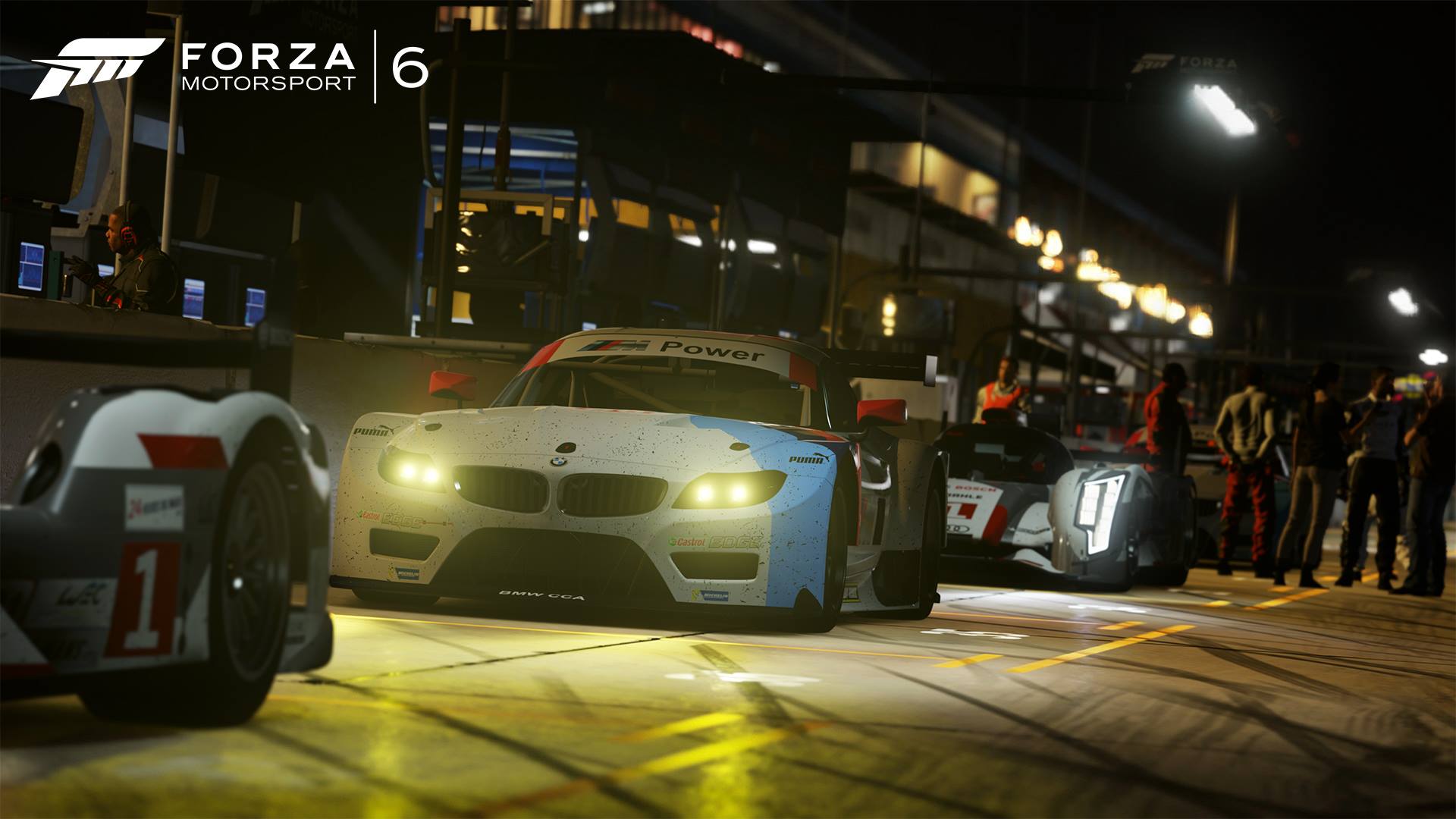
Little flourishes – like the dust clouds between Turn 10 and 11 at Laguna Seca, or the wisps of mist and tyre smoke around Watkins Glen – also imbue the circuits with a little bit of animation that’s rarely seen in a racing game, even if they are scripted and do lose some of their novelty after a while.
In terms of content, then, Forza Motorsport 6 certainly won’t leave players disappointed. Should you get bored of racing on bone dry tarmac, though, there are ways you can spice things up a bit…
Spinnin’ In The Rain
Wet weather racing isn’t a phenomenon that’s new to racing games, so its presence in Forza Motorsport 6 is only noteworthy in that it’s taken developer Turn 10 Studios this long to include it in a core Forza Motorsport title.
To perhaps compensate for this, Forza Motorsport 6 doesn’t just employ the water droplet effects and overcast skyboxes as found in DriveClub, F1 2015 and Project CARS: in a first for the genre, fully-rendered and simulated puddles are also there for players to contend with.
Though they sound fairly simple at first, the puddles do have a considerable impact on how you tackle a track, especially when compared to the way you approach the same circuit in dry conditions. Not only is the lack of adhesion to the road surface a prime consideration, but the puddles themselves often require you to alter your race strategy – whether that involves finding an alternative racing line when there’s standing water in the way, or having to choose more carefully how and when you’ll make a passing move.
Perhaps the best in-game example of how puddles can have a huge impact on your racing style can be found at Sebring. The huge expanse of standing water alongside the pit wall on the start/finish straight, for instance, severely restricts how much of the track you can use whilst lining up an overtake into Turn 1, which incidentally also has a great big puddle on the exit awaiting drivers trying to cling on from the inside line.
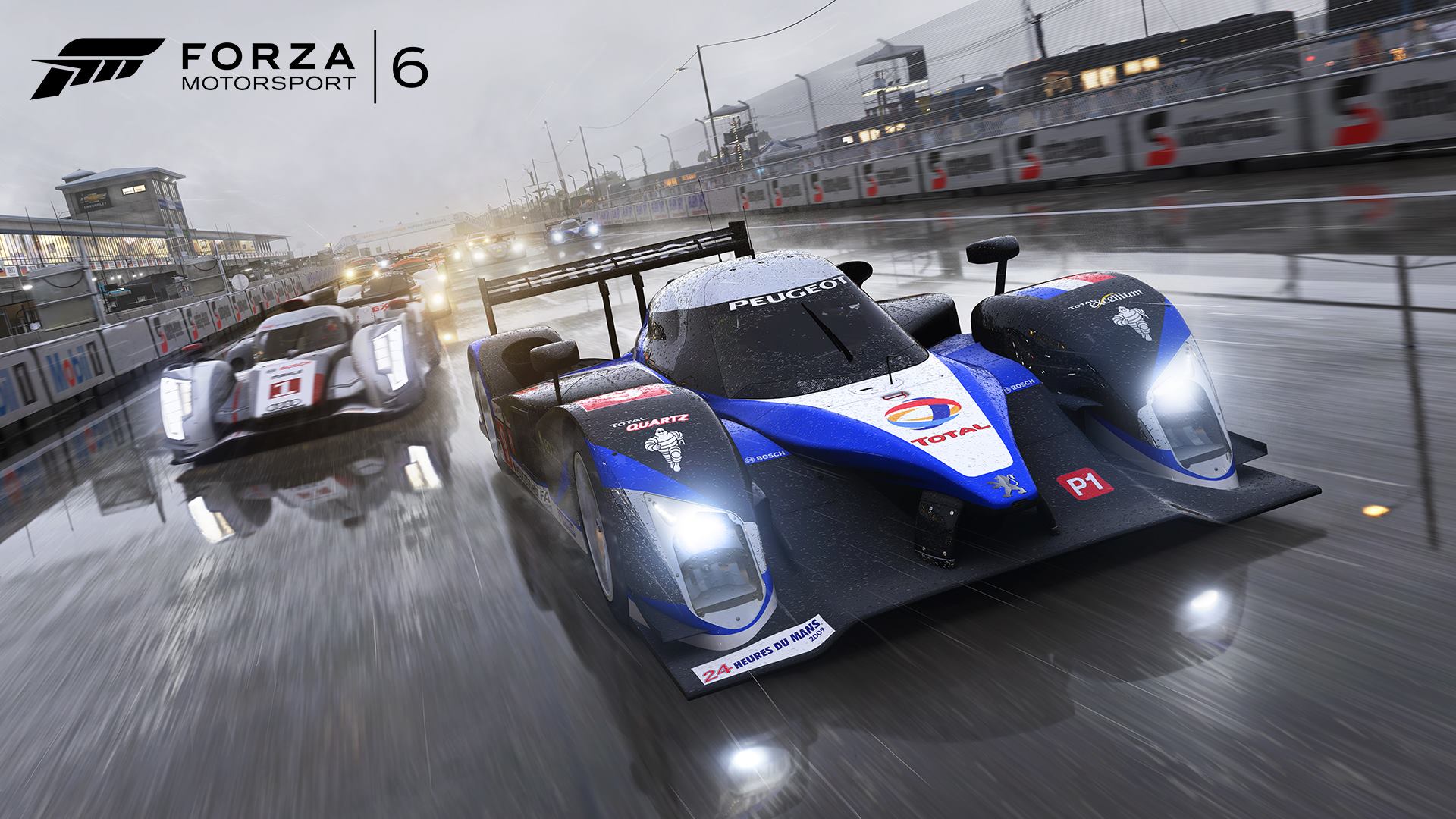
Likewise, the puddle stretching across the Fangio chicane is impossible to avoid at racing speeds, meaning you have to set the car up for the puddle ahead, preparing as straight a line through as possible in order to prevent the car from over-rotating or aquaplaning straight into the crash barrier.
These weather effects also go beyond simply affecting the levels of grip on the track. Spray being kicked up by cars ahead, for instance, severely compromises your forward visibility, and the water droplets that streak across the windows are only bettered in the racing game genre by DriveClub. Had the rain effects been fully dynamic, instead of being preset and ‘baked in’ before each race with no adjustable parameters, Forza Motorsport 6 might very well have offered the most authentic wet weather racing experience of any driving game to date.
What makes it even more of a triumph is that Turn 10 has managed to achieve all of this in a game that runs at an identical resolution to DriveClub, at up to double the framerate, on the Xbox One – a console that’s objectively inferior from a technical standing to the PlayStation 4 platform that DriveClub is exclusively available on.
How the studio has achieved what it has with Forza Motorsport 6 is nothing short of spectacular, to the point where the less impressive details (static water droplets on car bodywork, spray not being rendered in mirror reflections, mediocre splash effects when you drive through puddles, etc.) are much easier to overlook.
The night racing that makes its core Forza debut in Forza Motorsport 6 is also well executed. Even though it doesn’t have quite as novel an impact on proceedings as the rain effects, it does shake up things enough for the limited range of tracks in nocturnal configurations to feel noticeably different in feel and character to when they’re available in daylight, whether it’s being bathed in the floodlights around Daytona or Yas Marina, or plunged into pitch darkness at Spa or Le Mans.
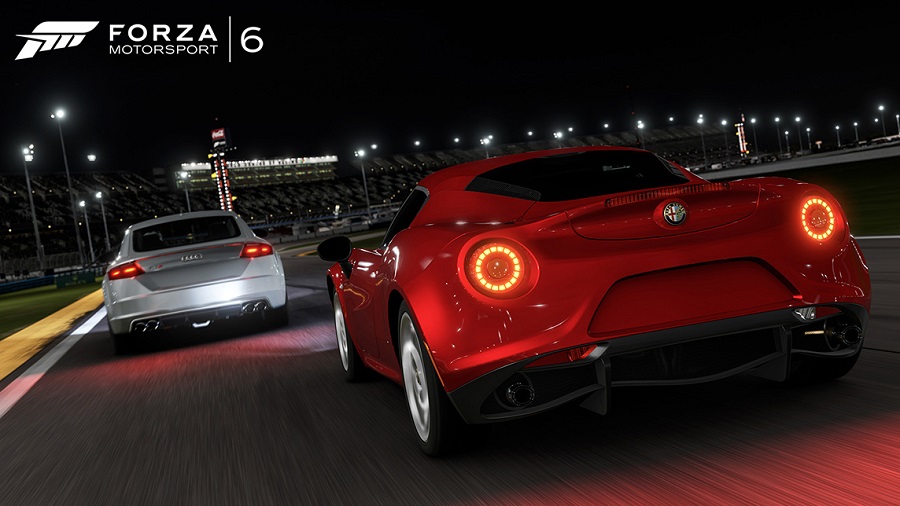
As with the wet weather, though, night racing isn’t dynamic, so those expecting day-to-night transitions in the game’s various endurance showcase races will be sorely disappointed.
It’s also a shame that rain effects aren’t available on all the circuits or in night conditions, and that the implementation itself might be perhaps too extreme (if real life grand prix races were held on tracks as sodden as Forza Motorsport 6’s, it’s likely they’d be cancelled over safety concerns). For a first attempt, though, it’s a delightfully well implemented feature, and offers a solid foundation for Turn 10 to build upon in future Forza Motorsport releases
And They All Raced Happily Ever After (For The Most Part)
Remember that “interactive love letter” comment I made earlier about Forza Motorsport 6’s car roster? That sentiment can also be applied to the game’s career mode structure, which uses the ‘Stories of Motorsport’ theme as a basis of justifying all the racing you’ll be doing.
On face value, that passion for auto racing and cars as demonstrated by the vehicle line-up translates well here, with each series and car division being introduced through deftly-written summaries from either the anonymous narrator, or former Top Gear presenters James May and Richard Hammond.
Those monologues are also part-and-parcel of the more motorsports-orientated showcase events, with the likes of IndyCar driver Josef Newgarden and V8 Supercars legend Mark Skaife each being the voice-over representatives of their racing disciplines.
Each of the racing championships (three in each ‘volume’; 15 in total) have a specific theme, too, ranging from geographical location to highlighting specific racing series and celebrating some of the world’s most significant circuits. The variety of track routes also means you’re regularly racing on different layouts – even if the locations themselves, along with their obligatory “your next race is at <insert track name here>” loading screen introductions, do repeat themselves with some regularity.
Most of the event structures are also pretty well executed. Things do start off as a bit of a slog at the beginning of the career mode, where you’re stuck with the slower offerings of the starter volumes (a step back from Forza Motorsport 5 and Forza Horizon 2, which let you race in whatever category you wanted as long as you had an eligible car), but the car types do get progressively more interesting as you make your way into the later chapters.
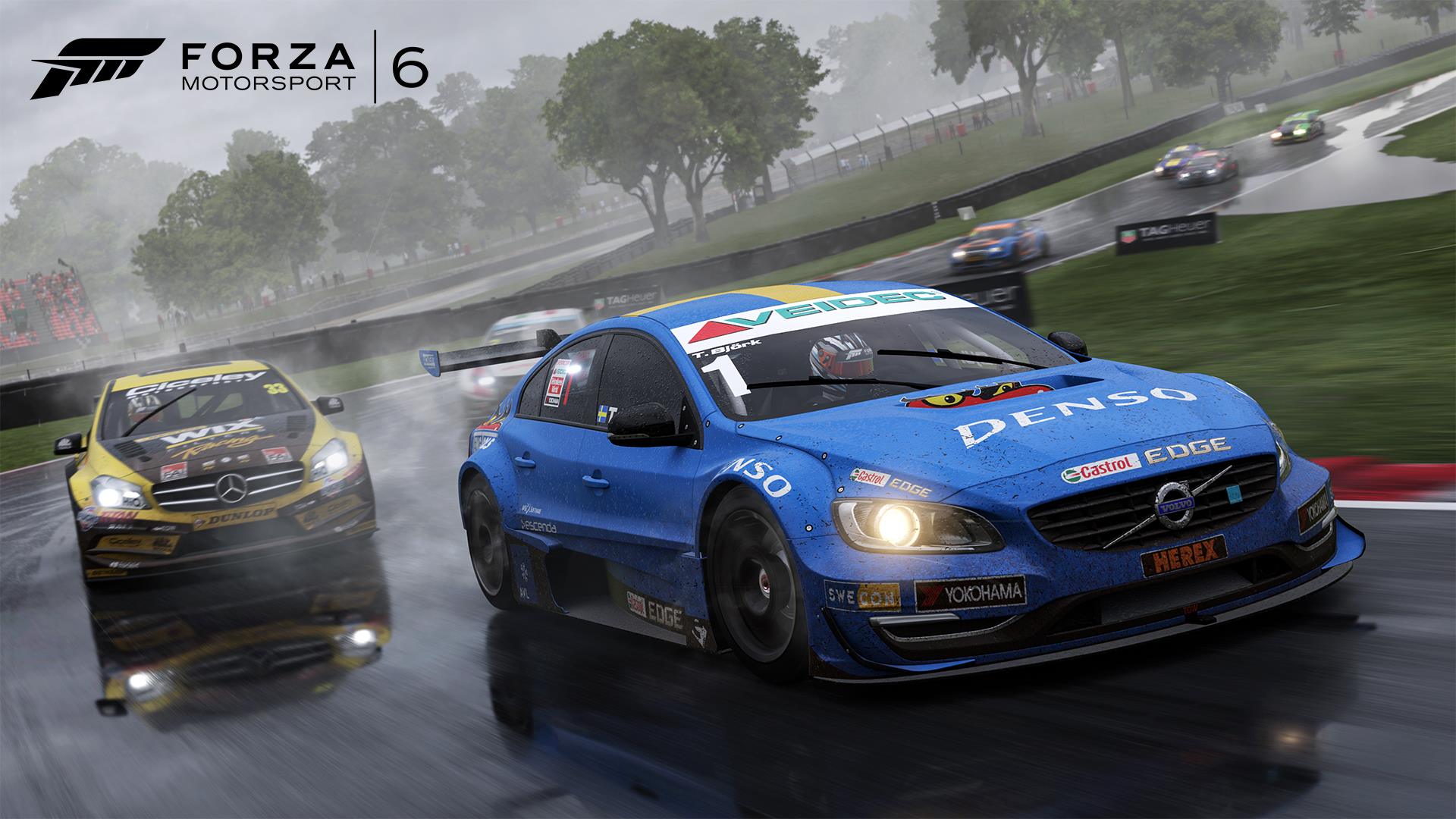
It’s in the more track-centric cars where you’ll find perhaps the best career mode races: not only are the grids of cars you’re up against varied and fairly closely matched in terms of Performance Index ratings, but the races are also of a decent length as well, meaning you can legitimately plan out an attack path to a podium finish instead of resort to the destruction derby-esque rampage approach that was required to win races in Forza Motorsport 5.
The tracks available in each division are also, for the most part, tailored very well to the cars that will be racing on them (the Audi 90 IMSA racer, for example, feels right at home on the tight turns of the Long Beach street circuit), though there are some areas where the combination feels really off, with the most obvious example being the eight-lap race around Indianapolis’ ‘Brick Yard’ oval that poorly introduces the first Formula E series in the career mode.
To help make up for this, the new Showcase events do offer challenges that feel more focused to specific car types, with the ‘Moments in Motorsport’ types that place an emphasis on historic racing being perhaps the highlight of them all. Should tedium with the “Stories of Motorsport” career mode start to set in and you feel the need for some light-hearted trials, then you’ll find enjoyment in the autocross and car bowling Showcases that offer a refreshing, palate-cleansing change of pace to the more serious racing.
Showcases also accommodate for players who’d prefer a more hardcore experience via the game’s lengthy endurance races, where fuel management and a focus on maintaining consistency are just as important as outright pace.
Those looking for the greatest challenge of all will find the 3 hours+ endurance race around a sodden Sebring to be right up their alley – even with assists on and the Drivatar speed turned down, it’s comfortably one of the most demanding out-of-the-box singleplayer races in the game, especially if you don’t select the fastest car available for the event.
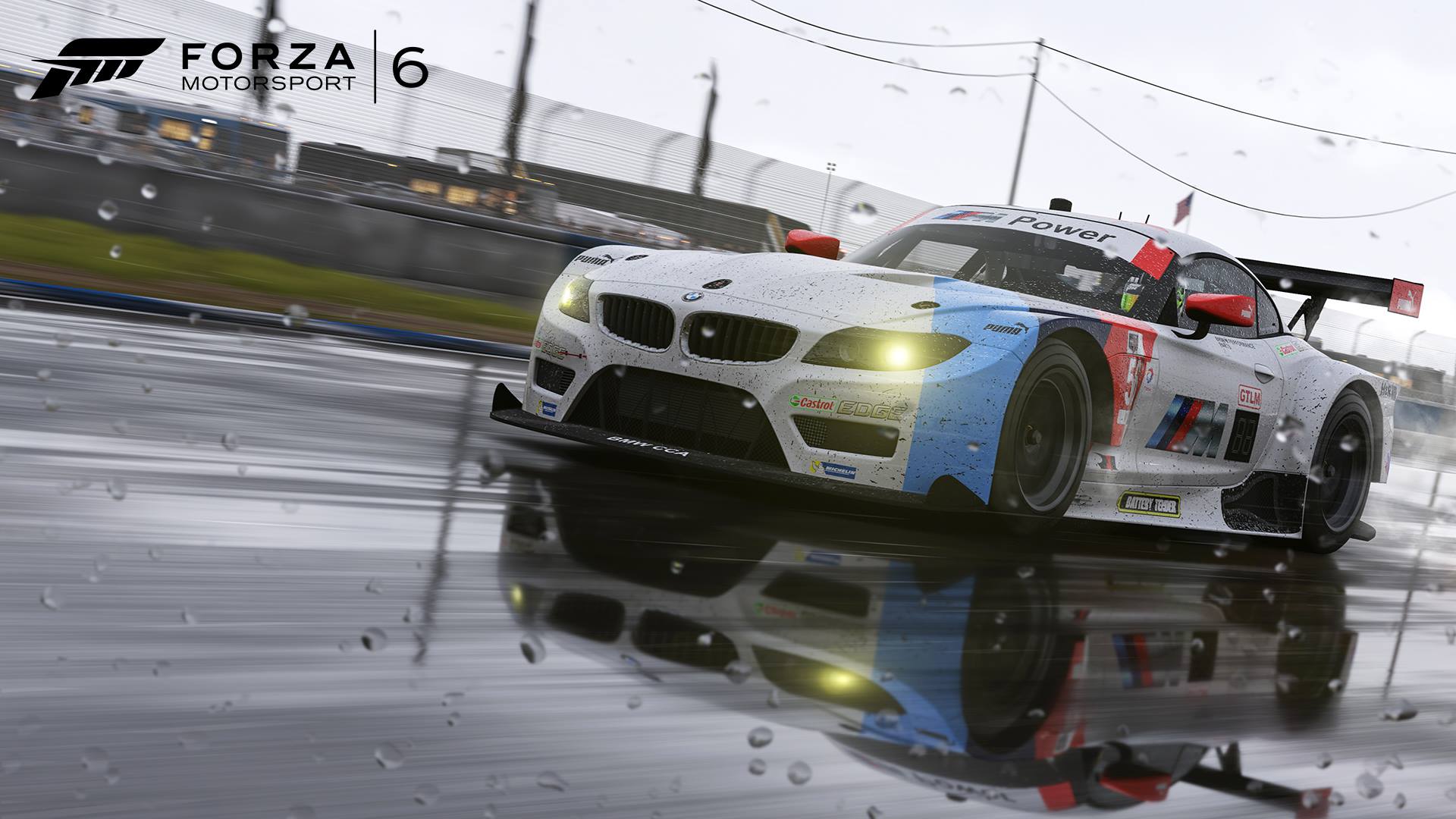
It’s a shame, then, that the focus on motorsport in the career mode and showcase events is, for the most part, nothing more than skin deep. For instance, qualifying is entirely absent, as are any form of penalties for dirty driving: turn the damage simulation off, and there are practically zero repercussions for your aggressive actions.
The endurance showcase events are also devoid of any pit stop animations, and every race in the game is a standing start – even for the events on the Indianapolis, Sebring and Daytona circuits, despite the fact contemporary IndyCar and sports car races on those tracks always commence through rolling starts.
Admittedly, they are minor inconveniences, and they don’t have a huge impact on proceedings. Given the game’s greater emphasis on motor racing in comparison with previous Forza releases, though, it’s disappointing to see Forza Motorsport 6 miss out on overlooked opportunities it could so easily have capitalised on.
Making Pastor Proud
For the most part, then, all seems to be good with Forza Motorsport 6 – bar a few frustrating faults, it appears to be a much improved game over its predecessor. Where it all starts to fall apart, though, is when you get to the nitty gritty of racing, and it’s here where the appeal of Forza Motorsport 6 really starts to wane.
Most of that is down to the Drivatar system; developer Turn 10’s cloud-powered artificial intelligence setup that uses telemetry data from actual players to dictate the behaviour of the NPCs you’ll race against in the career mode races (Free Play and the Showcases still rely on conventional AI programming). Whilst the Drivatars in Forza Motorsport 6 are noticeably less aggravating to jostle for positions with than they were in Forza Motorsport 5, they’re still some way off from being classified as ‘clean drivers’.
Even in their least aggressive state, the Drivatars are incredibly prone to bumping and pranging into you with considerable force, especially in races with either tight inaugural corner complexes that bunch up the field (like the ones at Monza, Long Beach, Lime Rock Park and Hockenheim) or races where you’re placed in the back half of the starting grid.
The knocks themselves are acceptable enough in the slower car classes, where there’s more time to react to the shortcomings of the Drivatars, but are far more frustrating and increasingly difficult to tolerate when you’re piloting faster machinery.
It also doesn’t help that the Drivatars seem to be pretty lackadaisical when it comes to implementing acceptable racing behaviour. All too often in my experience, races are ruined by AI opponents that can be difficult to predict and break every rule in The Racing Driver’s Guide To On-Track Etiquette – whether that involves suddenly slamming on the anchors as you’re slipstreaming them down high speed straights, weaving across the track in braking zones, rejoining the circuit in the path of oncoming traffic or driving you off the road itself when you’re attempting to overtake.
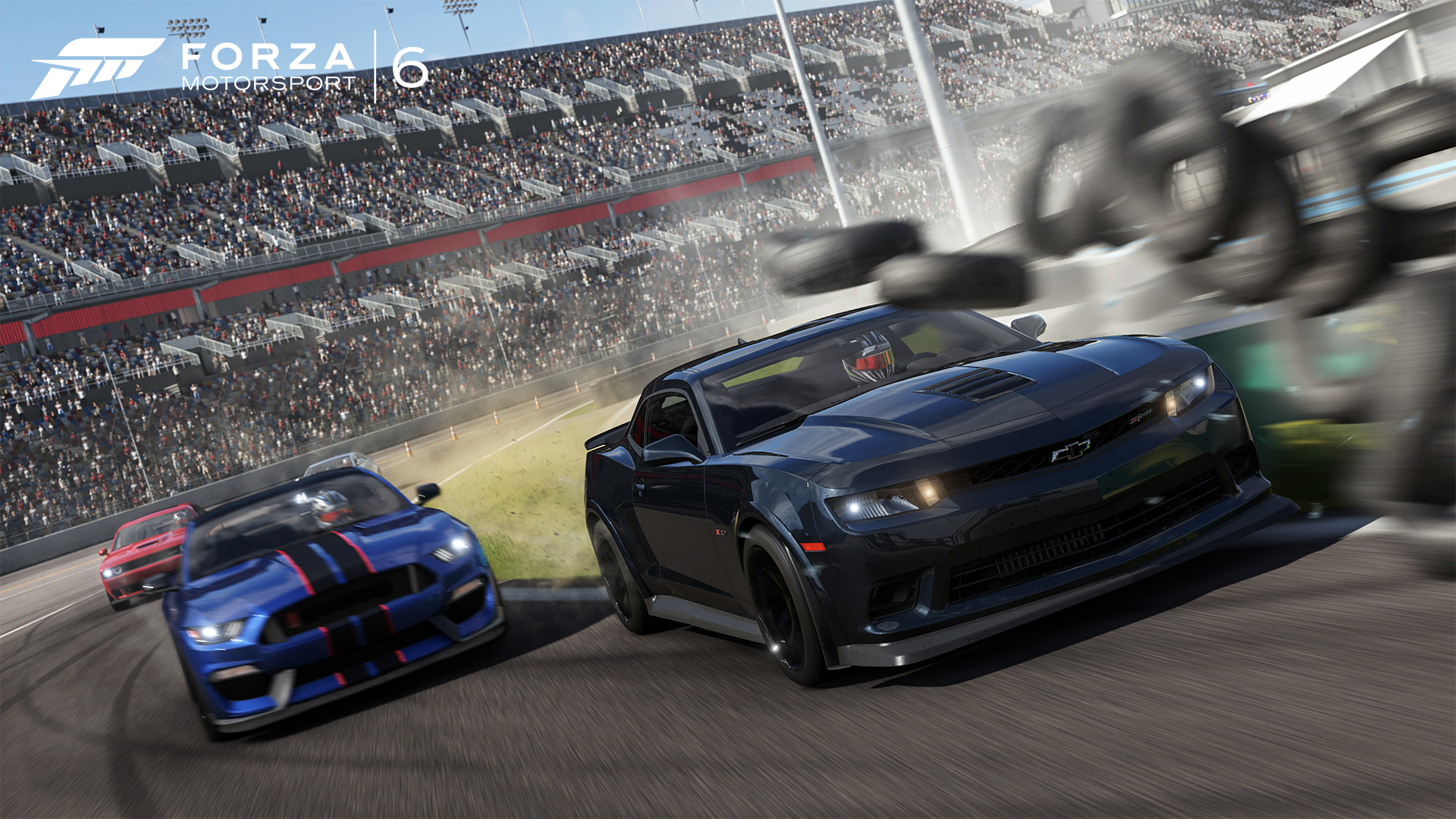
Things do improve as the race progresses and the field starts spacing out, and the abrasiveness of the Drivatars does depend on the car/track/difficulty/grid placement combo, but that hurdle can be incredibly frustrating and difficult to overcome when your race is ruined by gung-ho AI that lack in spatial awareness as much as they’re unable to employ even basic racing craft.
That’s not to say it’s impossible to have good races with the Drivatars, and it is worth pointing out that the ballistic pace of some of the faster AI drivers has been reigned in since Turn 10 released the patch that stopped the leading pack of NPCs racing off into the distances at a pace a majority of players simply weren’t able to match.
However, at this moment in time, Forza Motorsport 6’s cloud-powered opponents aren’t that enjoyable to compete against – which, in a game with a claimed 70+hours worth of singleplayer career mode content, is something to feel particularly concerned about.
Struggling with the setup
Perhaps the biggest issue that plagues Forza Motorsport 6, though, is the inconsistency between the cars. While some feel brilliant and intuitive to hustle along at pace, others behave in a manner that you just wouldn’t expect.
Take the Ferrari 458 GTE racing car as an example. Here is a machine that’s shod in super-sticky slick racing tyres, comes with copious amounts of downforce and has been designed for both the professional drivers and the private ‘gentleman racer’ to be competitive in. Given its success in Blancpain GT and World Endurance Championship events across the world, you’d think these qualities would make the 458 GTE one of the less abrasive cars to drive in the game bone stock – especially as the nigh-on identical car in Forza Motorsport 5 felt relatively planted and composed in its out-of-the-box configuration..
And yet, the way its handling characteristics have been implemented in Forza Motorsport 6 is incredibly peculiar. Progressively feed the power on as you exit a corner, for instance, and the rear wheels will spin up, resulting in the car suddenly over rotating. Around sweeping turns at higher speeds, the rear end will lose grip and you’ll start drifting around the corner, even though the aerodynamics should be pressing the car onto the track. Use the curbs as real life racing drivers do, and you’ll bump across them so violently that you’ll be spat into the gravel traps and tyre barriers.
Put simply, unless you drive it with the overly-intrusive traction control aid on, it’s nigh-on impossible to race the Ferrari 458 GTE in the way you’d expect – attack the Circuit de la Sarthe in the way the professional racing drivers do in the 24 Heures du Mans, and you’ll be constantly fighting to control the car in a way that just isn’t representative of real life.
What makes this even more irritating is that several other cars in Forza Motorsport 6 handle in an equally unintuitive manner that feels just plain wrong. The Lotus E23 Formula One car immediately comes to mind here (how it can suddenly snap into oversteer at racing speeds around Monza’s Parabolica, I do not know…), as do many of the contemporary GT racers, a good chunk of the more potent supercars, all of the 1960s single seaters, a majority of the open-wheelers in the game and even the front-wheel drive Nissan GT-R LM Nismo Le Mans Prototype that was added to the game earlier this year as free DLC.
It also doesn’t help that, when the cars do lose all adhesion with the road surface, it’s incredibly sudden and difficult to counter correctly without first needing to bring the car down to a crawling pace. I’m all up for being challenged in a racing game, but it’s difficult to enjoy driving these more unpredictable cars in Forza Motorsport 6 when you struggle to feel truly on top of what they’re doing and how they’re interacting with the road surface when you’re driving at anything more than eight-tenths. You need to have the confidence to push these cars to their respective limits, yet the aforementioned examples rarely instil you with much faith in their ability to stay on the track.
Thankfully, the vehicles that aren’t frustrating to pilot at speed do, on the whole, feel far more intuitive – and, as a result, enjoyable – to drive. It’s possible, for instance, to lean on the grip in the Group 5 touring cars (especially the sublimely-balanced Ferrari 512BB LM), and the 1970s Formula One racers and IndyCars are so malleable on the limit that it’s possible to be consistently quick in them whilst playing on a controller with the steering set to the uber-sensitive ‘Simulation’ mode.
Indeed, many of the cars feel quite rewarding to drive on the limit, and it’s only the outlying minority (albeit one that makes up a sizeable chunk of the game’s car list) that feel atrocious out of the box.
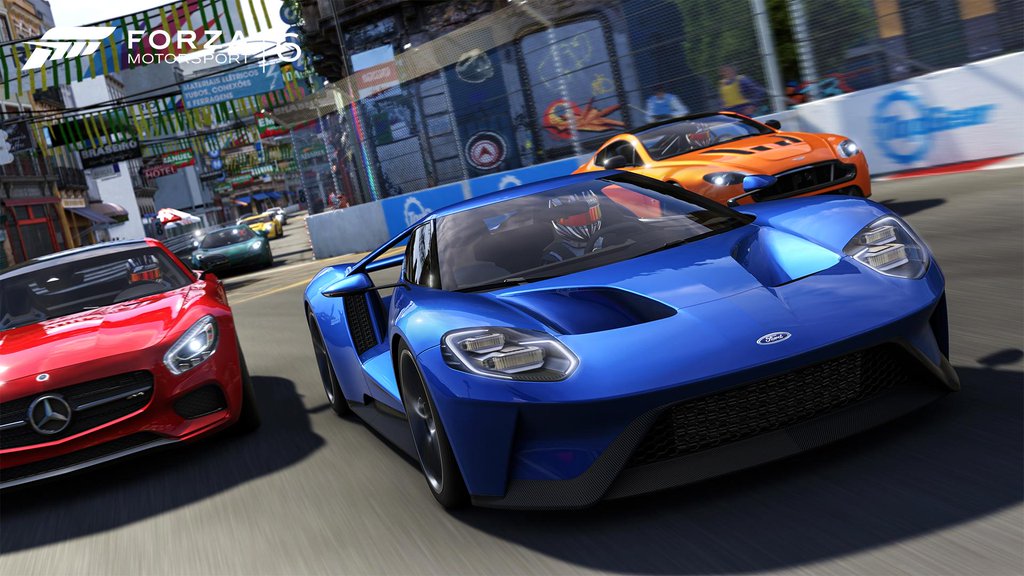
You can also tune out some of the spikier handling qualities of some of the cars (the Subaru BRZ, for instance, feels far more planted and composed when you mildly tweak the tyre pressures), though others – like the aforementioned Lotus E23 – do remain skittish in spite of the tweaks made to the suspension, aerodynamics and tyre pressures.
Curiously, it’s also impossible to tune or adjust any of the cars in the Showcase events, meaning, if you don’t feel happy with the balance of the cars in their stock form, you’ll have no choice in the matter but to either slap on a Mod card (more on those later) or make do with the setup you’re given.
That’s not to say the more challenging cars in the game are impossible to enjoy driving – as with any racing game that leans more towards realism, you do need to learn how to get the most out of each car, adapt your driving style to suit the handling characteristics and adjust them to the circuit layout and conditions. I did, in fact, find myself warming up to the GT cars in particular upon investing more and more time into them and figuring out their respective quirks.
And again, I iterate the point that a majority of the cars in Forza Motorsport 6 do handle with the verve and aplomb that feels authentic to the descriptions of a myriad magazine road testers and racing drivers from across the ages.
It’s just a shame that there’s such a broad divide between the cars that do drive well and the ones that don’t, especially when other games of its ilk (Project CARS, GRID Autosport, various Gran Turismo games and even Forza Motorsport 5) don’t suffer from handling inconsistencies as prevalent as those found in Forza Motorsport 6.
Scruffy final sector
What’s equally puzzling is that, despite the franchise’s history of being one of the more innovative racing game series of recent times, Forza Motorsport 6 is quite content with not only sticking to conventions and tropes that have remained unchanged from previous Forza releases, but also be, in some cases, a retrograde step for the franchise.
Take the car allocation in the career mode, for instance. Much like the Motorsport and Horizon games, Forza Motorsport 6’s division-based career mode structure assigns cars to specific events. It’s understandable at a glance, until you realise that quite a few cars in Forza Motorsprt 6 (41 in total – or roughly one in every nine cars in the game) aren’t assigned to a division.
So, if you want to race the Auto Union Type D against its in-game contemporaries from Mercedes-Benz and Maserati in a singleplayer race, you can only do so in the sole pre-war-themed Showcase event or through Free Play mode.
However, the issue here is that it’s impossible to actually select which cars you can race against in Free Play if they don’t sit in a pre-exisiting division: instead, the game assigns you AI rivals that match your car’s Performance Index rating.
As a result, you can race against a few 1930s Silver Arrows in your aforementioned Auto Union in Free Play, but you’ll also have Bentley Continental GT Speeds, Audi RS7 Sportbacks and the Lamborghini Urus SUV concept car to contend with. And that’s assuming you’ll be racing the pre-war single seaters bone stock…
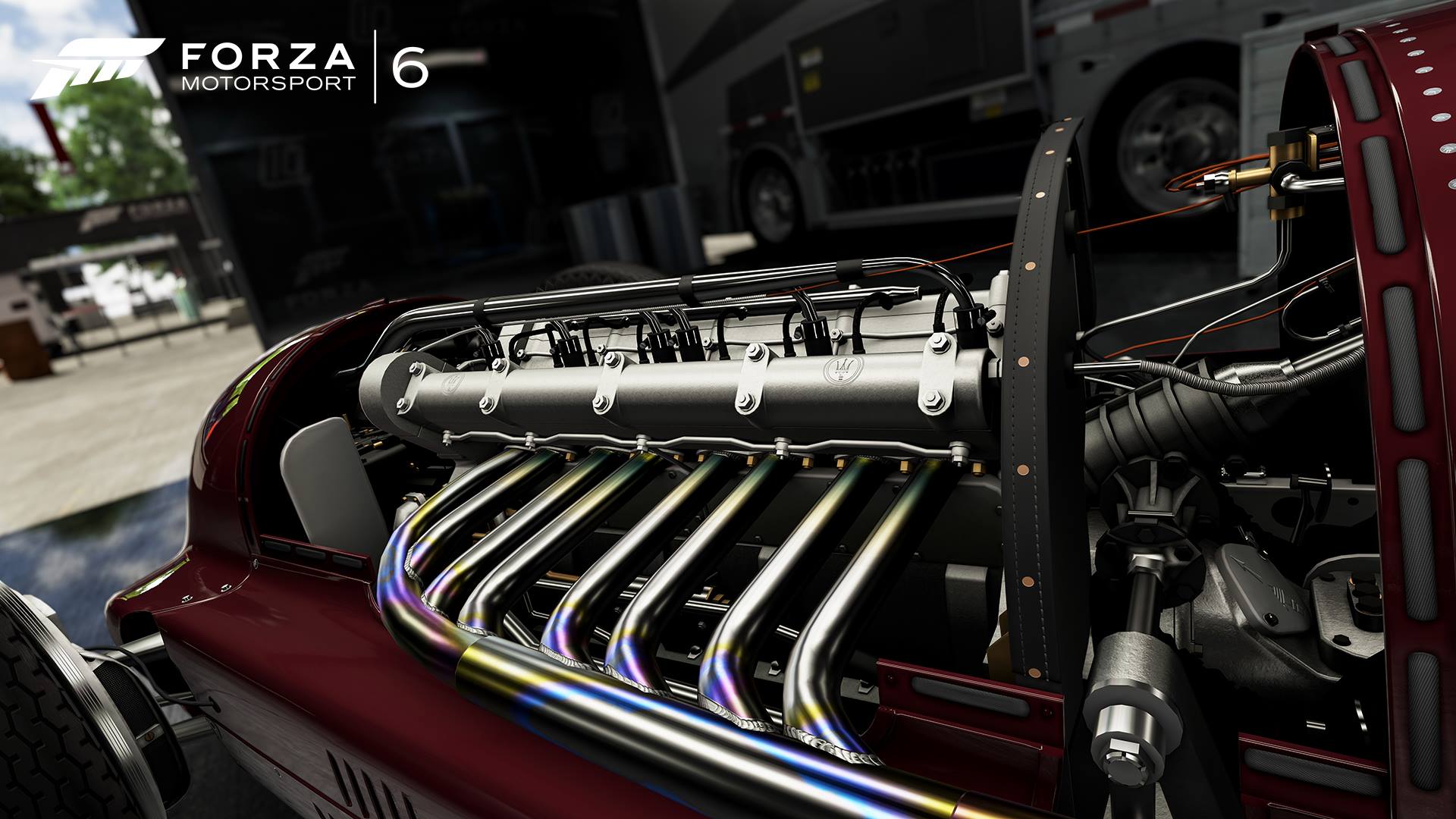
It’s a bizarre system, especially as players can adjust car restriction parameters in the online multiplayer lobbies (even going as far to choosing the maximum amount of cylinders a car’s engine can have), nor were there any such singleplayer event limitations in Forza Motorsport 5 or Forza Horizon 2.
Things have improved with the recently-added option to select Free Play AI cars based on what division they sit in instead of their Performance Index class, allowing players to, for example, race against Group 5 touring cars outside of the career mode and online events without having to jostle with a bunch of high-end supercars.
However, it only further highlights just how restrictive Free Play is in comparison to not only Forza Motorsport 6’s online lobby customisation, but also the flexibility of Free Play equivalents in other racing games – Project CARS’ ‘Quick Race’ mode, for example, gives players a huge amount of freedom to race what they want, on what location they want, with what weather options they want against their desired car types in whatever way they want.
Another puzzling legacy feature of previous Forza games that’s made its way into Forza Motorsport 6 is the non-adjustable cockpit camera perspective. Whilst some cars get the viewpoint right, with a good view of the road ahead and the rear view mirror positioned in an appropriately useful place on the screen, others give you such a skewed perspective that it’s at times impossible to see where you’re going (the Dodge Challenger Hellcat’s interior viewpoint, for instance, puts the base of the windscreen right at eye level, meaning you cannot see the track or the cars in front of you when you’re navigating uphill corners, like Eau Rouge and Radillon at Spa-Francorchamps).
It also doesn’t help that many of the interior views also place you ridiculously far away from the dashboard, further confining the already restricted visibility (the Hellcat again suffers from this immensely). A few cars I’ve tested so far don’t have the steering wheel positioned in the centre of the screen either (the BMW 2002 Turbo instantly comes to mind here, as do the Bugatti Veyron and Ferrari 458 Speciale), with the offset perspective feeling incredibly awkward and distracting – especially when compounded with the compromising cockpit camera issues mentioned earlier.
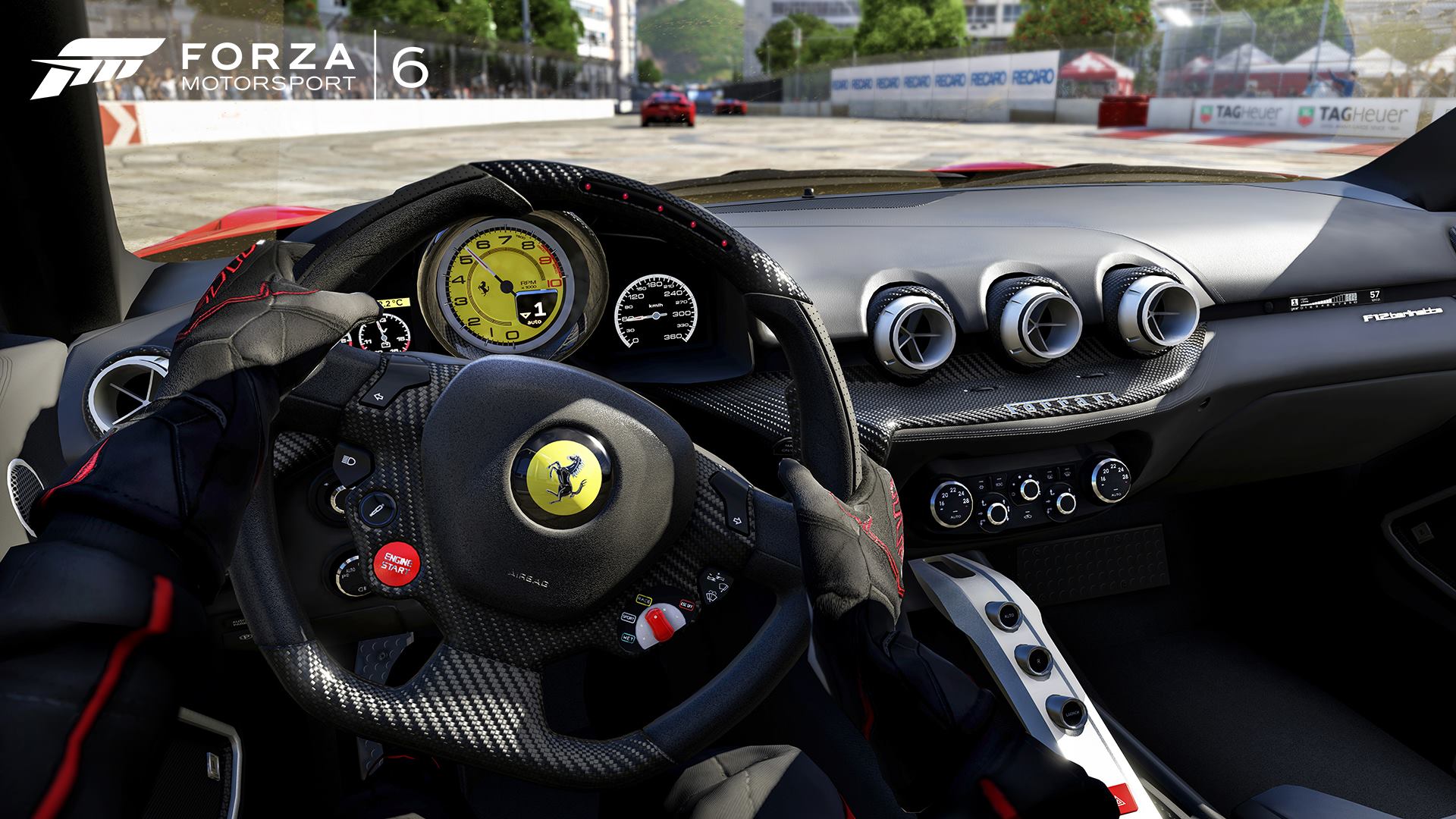
Such qualms would be fine, of course, if Forza Motorsport 6 had the option to tweak the positioning of the interior view to suit the player’s preference. However, that isn’t the case, and it’s disappointing to see this issue retained in Forza Motorsport 6 when games like Project CARS, F1 2015, DiRT Rally and even Gran Turismo 6 let the player adjust the cockpit camera positioning and field of view.
It’s understandable to have compromised visibility in the more modern Le Mans Prototypes and single seaters, where the driver is pretty much laying down in the cockpit, but having to make do with awful camera positioning in the road cars (which, less we forget, come with multiple seat adjustment options in real life) is borderline unacceptable in a modern racing game – especially one developed by a huge team with the financial backing of a corporate behemoth.
Admittedly, a work around for the cockpit camera is to use the bonnet view, but even then that isn’t a guaranteed fix. Yes, you often get a substantially improved view of the road ahead, but the viewpoint placement is usually right at the very tip of the bonnet. As a result, it’s incredibly hard to line your car up for corner apices and passing moves on other cars because the wheel arches are often cropped out of view, making it quite difficult to judge exactly where your car is in relation to everything else around you.
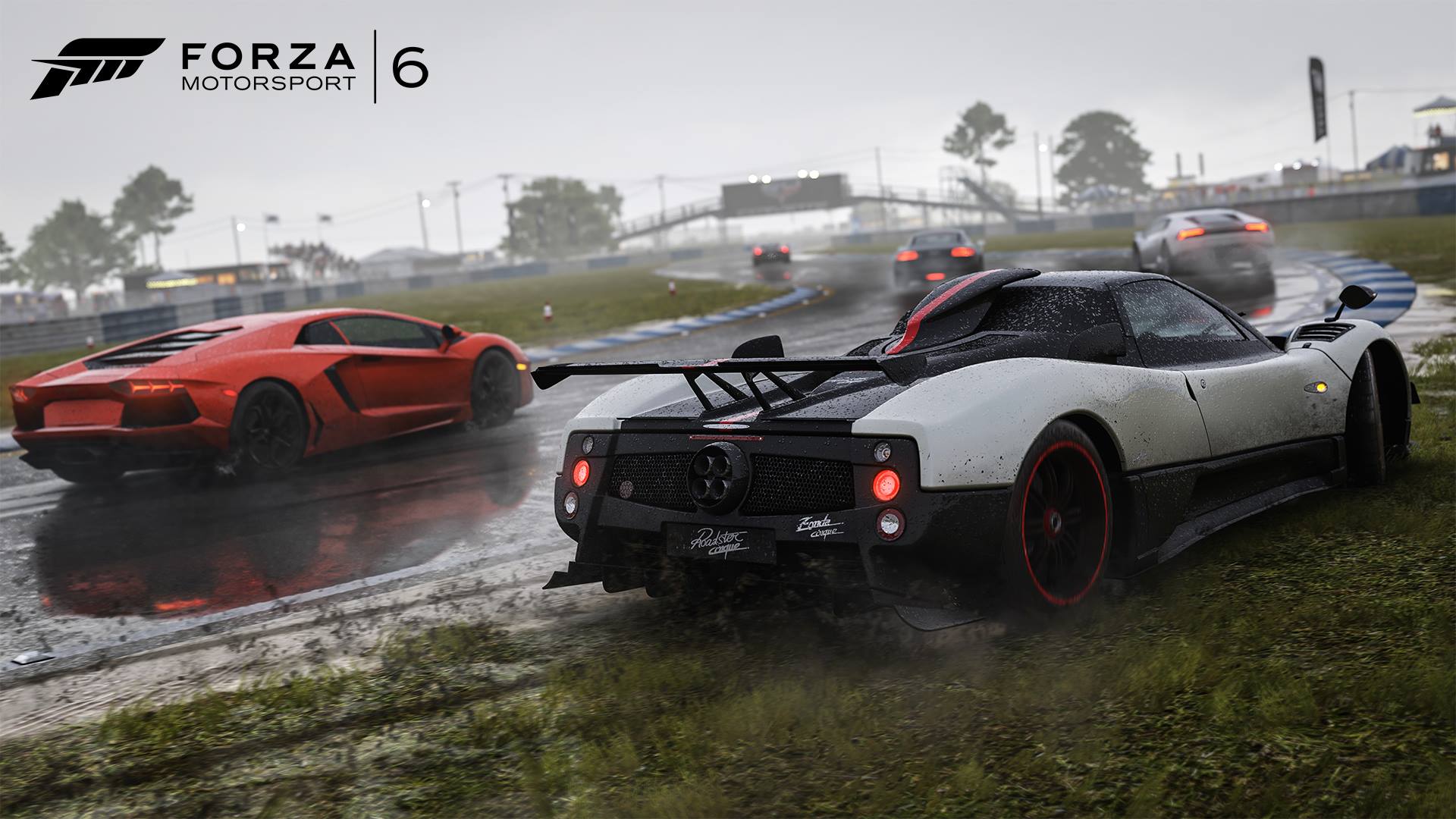
Using the bonnet camera also makes what makes it more likely that you’ll spot what appear to be repeating road textures, which, when compounded with the slight camera distortion that comes with travelling at higher speeds, increases the risk of players succumbing to motion sickness (I point this out because Forza Motorsport 6 is the first racing game I’ve ever experienced that made me feel genuinely queasy whilst playing it).
The problems Forza Motorsport 6 has go far beyond that, and listing them all would be an impractical use of article text space and your time spent reading this already quite lengthy review. I could warble on for paragraphs on end on how, for instance, the ‘finish third place or higher’ setup in the career mode feels like a backwards step for the series (especially when Forza Horizon 2, a game that revolves around the premise of a hyper-realised music festival, not only uses a more autosports-authentic points system in its championships, but also lets players progress through whatever series they like in spite of where they finish in each series).
Likewise, I could rant for hours on how I find the Mod cards system to be an arbitrary and underbaked feature that offer meaningless rewards and incentives when the levelling system is far more financially lucrative, or how I’ve despised the absence of penalties to discourage dirty driving and track boundary abuse in the League events (despite the Leagues themselves being based on the idea of rewarding players based on their racing skill) and how I’ve found the yellowish tinge to the colour palate makes the racing line assist harder for players like myself who suffer from deuteranopia, or red/green colour blindness, to rely on when quickly learning the layout and braking points on an unfamiliar car/track combo.
All in all, these gripes and issues slowly add up to the point where they don’t simply nibble at the foundations of Forza Motorsport 6, but instead coat the game’s shining beacons of brilliance with a layer of tarnish that’s hard to ignore, and even harder to eradicate completely once you start picking away at all the other oversights that are sprinkled throughout the title.
Conclusion
Over the many years I’ve spent playing racing games, none that I can recall off the top of my head whilst I’m writing this conclusion have infuriated me as much as Forza Motorsport 6. Multiple times during my many weeks spent testing the game, I’ve reached the point where I’ve genuinely had to turn the Xbox One off and leave it be for half an hour, and only go back to playing through Forza Motorsport 6 once I’m sure that my rage and frustration won’t cloud my further judgements on the game.
Whether it’s being taken out by backmarker AI LMPs that don’t get out of your way as you attempt to pass them at Daytona’s Bus Stop Chicane, to the absence of any discouraging of dirty driving in multiplayer races, suddenly losing control of a car in spite of the aerodynamic and mechanical grip it should possess or having no chance of progressing through the Modern Hypercar career mode series without dropping the AI difficulty down considerably because five of the NPCs are using overpowered Caparo T1s that literally have no place in that championship, there are times where I’ve felt truly disappointed with Forza Motorsport 6; a title that has so much potential to be an awe-inspiring racing game, yet frequently falls flat on its face in spite of having everything going for it on paper.
However, in the moments when everything comes together, Forza Motorsport 6 can feel like one of the greatest racing games ever made. When all the pieces come into place, the end result of those immense production values, excellent sound design, great track roster and extensive line-up of car types is an experience that simply can’t be replicated in any other current-gen racing game.
It’s the relative frequency of these revelatory-esque highlights during my time testing Forza Motorsport 6 that have resulted in the rating it’s been given. During those moments where everything falls into line, the game shines so brightly that you can momentarily forgive the flaws it has, accept it for what it is and become fully embraced and immersed in the at-times immensely enjoyable experience that Forza Motorsport 6 offers.
Had the rest of the game lived up to those moments, then Forza Motorsport 6 would not only have been given a higher rating, but also be with a worthy shot of being the best racing title of 2015. Instead, the inconsistencies in Forza Motorsport 6’s execution make it a game that, whilst worth playing if you already own an Xbox One, is laden with so many irritating foibles that it’s hard to recommend over its more focused and well-rounded competition.


















